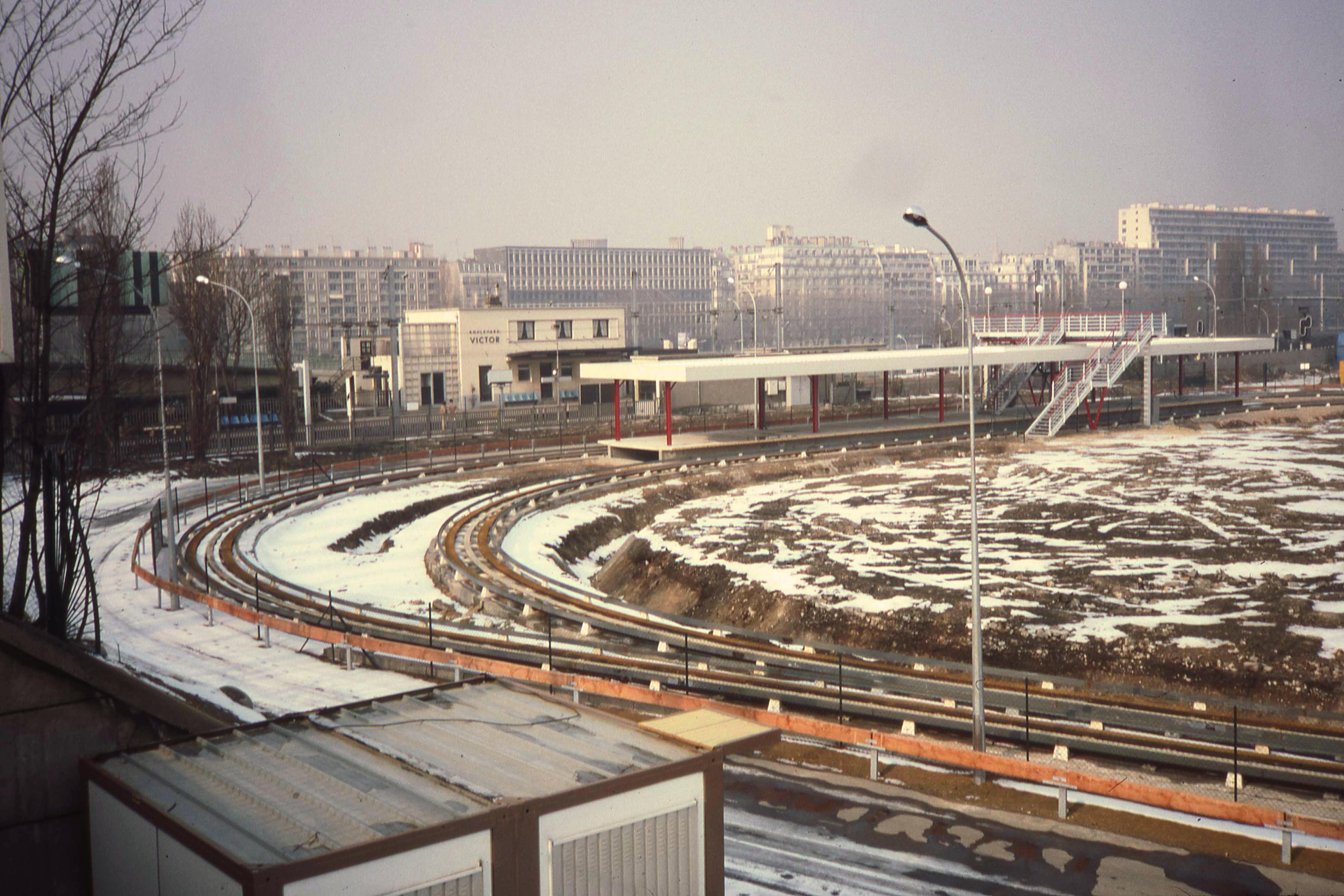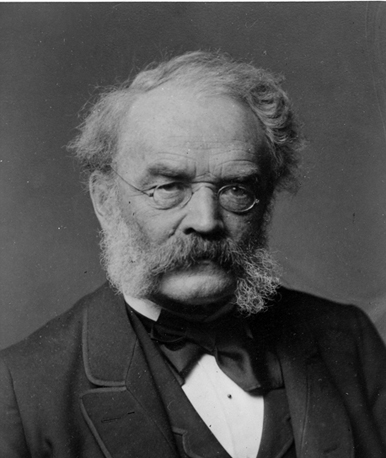|
Aramis (personal Rapid Transit)
The Aramis was an experimental personal rapid transit (PRT) system developed in France for deployment in the Paris area. Aramis included the unique feature of non-mechanical platooning that allowed the small cars to run as virtual trains in areas of higher transit density. This would allow the system to maintain high throughput in busy areas, with the trains breaking up into individual cars and going their separate ways as they approached their destination. In spite of considerable development, the platooning system was never made to work properly, and the cars tended to bump and jar in testing. The project was eventually shut down in November 1987, its place taken by the conventional Véhicule Automatique Léger system developed through the same period.J. Edward Anderson, "Some Lessons from the History of Personal Rapid Transit (PRT)"read onlineon faculty.washington.edu Phase 0 of Aramis began in 1969. During Phase 0, the patent was processed, a test site was determined, and the ... [...More Info...] [...Related Items...] OR: [Wikipedia] [Google] [Baidu] |
Boulevard Victor Experimentation
A boulevard is a type of broad avenue planted with rows of trees, or in parts of North America, any urban highway or wide road in a commercial district. In Europe, boulevards were originally circumferential roads following the line of former city walls. In North American usage, boulevards may be wide, multi-lane thoroughfares divided with only a central median. Etymology The word ''boulevard'' is borrowed from French. In France, it originally meant the flat surface of a rampart, and later a promenade taking the place of a demolished fortification. It is a borrowing from the Dutch word ' 'bulwark'. Notable examples Asia Azerbaijan *Baku Boulevard Bangladesh *Manik Mia Avenue Cambodia *Norodom Boulevard *Monivong Boulevard *Sihanouk Boulevard India * M G Road *Anna Salai * Indira Gandhi Sarani * Marine Drive * Krishnaraja Boulevard *Rajpath *Necklace Road * Mahatma Gandhi Road *Foreshore Road Indonesia *Jalan Jenderal Sudirman *Jalan M.H. Thamrin *Jalan Jenderal Gatot ... [...More Info...] [...Related Items...] OR: [Wikipedia] [Google] [Baidu] |
Délégation Interministérielle à L'aménagement Du Territoire Et à L'attractivité Régionale
The ''délégation interministérielle à l'aménagement du territoire et à l'attractivité régionale'' (English: Interministerial Delegation of Land Planning and Regional Attractiveness) or DATAR was a French administration working for the Minister of Territorial Development. It applied decisions taken by the Interministerial Committee of Land Planning and Development (CIADT). It was created in 1963 by Georges Pompidou's government. In 2009, DATAR handed over its missions to the ''Commissariat général à l’égalité des territoires'' (English: General Commission for Equal Territories). Different names When created in 1963, the DATAR is named "Délégation à l'aménagement du territoire et à l'action régionale" (Land Development and Regional Action Delegation). In 2005, it changed to "Délégation interministérielle à l'aménagement et à la compétitivité des territoires" (DIACT; Interministerial Delegation of Planning and Territorial Competitiveness). In 2009, it ... [...More Info...] [...Related Items...] OR: [Wikipedia] [Google] [Baidu] |
People Mover Systems In France
The term "the people" refers to the public or common mass of people of a polity. As such it is a concept of human rights law, international law as well as constitutional law, particularly used for claims of popular sovereignty. In contrast, a people is any plurality of persons considered as a whole. Used in politics and law, the term "a people" refers to the collective or community of an ethnic group or nation. Concepts Legal Chapter One, Article One of the Charter of the United Nations states that "peoples" have the right to self-determination. Though the mere status as peoples and the right to self-determination, as for example in the case of Indigenous peoples (''peoples'', as in all groups of indigenous people, not merely all indigenous persons as in ''indigenous people''), does not automatically provide for independent sovereignty and therefore secession. Indeed, judge Ivor Jennings identified the inherent problems in the right of "peoples" to self-determination, as i ... [...More Info...] [...Related Items...] OR: [Wikipedia] [Google] [Baidu] |
Harvard University Press
Harvard University Press (HUP) is an academic publishing house established on January 13, 1913, as a division of Harvard University. It is a member of the Association of University Presses. Its director since 2017 is George Andreou. The press maintains offices in Cambridge, Massachusetts, near Harvard Square, and in London, England. The press co-founded the distributor TriLiteral LLC with MIT Press and Yale University Press. TriLiteral was sold to LSC Communications in 2018. Notable authors published by HUP include Eudora Welty, Walter Benjamin, E. O. Wilson, John Rawls, Emily Dickinson, Stephen Jay Gould, Helen Vendler, Carol Gilligan, Amartya Sen, David Blight, Martha Nussbaum, and Thomas Piketty. The Display Room in Harvard Square, dedicated to selling HUP publications, closed on June 17, 2009. Related publishers, imprints, and series HUP owns the Belknap Press imprint (trade name), imprint, which it inaugurated in May 1954 with the publication of the ''Harvard Guide to ... [...More Info...] [...Related Items...] OR: [Wikipedia] [Google] [Baidu] |
Aramis Or The Love Of Technology
''Aramis, or the Love of Technology'' was written by French sociologist/anthropologist Bruno Latour. ''Aramis'' was originally published in French in 1993; the English translation by Catherine Porter, copyrighted in 1996, , is now in its fourth printing (2002). Latour describes his text as "scientifiction," which he describes as "a hybrid genre... for a hybrid task" (p. ix). The genre includes voices of a young engineer discussing his "sociotechnological initiation," his professor's commentary which introduces Actor-network theory (ANT), field documents - including real-life interviews, and the voice of Aramis—a failed technology (Latour, Bruno. (1996). Aramis, or the Love of Technology. Cambridge, MA: Harvard University Press. p. x). The book is a quasi-mystery, which attempts to discover who killed Aramis. Aramis was supposed to be implemented as a Personal Rapid Transit (PRT) system in Paris. Simultaneously, while investigating Aramis's demise, Latour delineates the tenets ... [...More Info...] [...Related Items...] OR: [Wikipedia] [Google] [Baidu] |
Railroad Switch
A railroad switch (American English, AE), turnout, or (set of) points (Commonwealth English, CE) is a mechanical installation enabling railway trains to be guided from one Rail tracks, track to another, such as at a Junction (rail), railway junction or where a Branch line, spur or Siding (rail), siding branches off. Design The parts of a turnout are known by different names in different jurisdictions. The main terms in U.S. and UK usage are shown in the selectable diagrams. In this article, the U.S. term is listed first and UK second, in parentheses. The most common type of switch consists of a pair of linked tapering rails, known as ''points'' (''switch rails'' or ''point blades''), lying between the diverging outer rails (the ''stock rails''). These points can be moved laterally into one of two positions to direct a train coming from the point blades toward the straight path or the diverging path. A train moving from the narrow end toward the point blades (i.e. it ... [...More Info...] [...Related Items...] OR: [Wikipedia] [Google] [Baidu] |
Aramis, Or The Love Of Technology
''Aramis, or the Love of Technology'' was written by French sociologist/anthropologist Bruno Latour. ''Aramis'' was originally published in French in 1993; the English translation by Catherine Porter, copyrighted in 1996, , is now in its fourth printing (2002). Latour describes his text as "scientifiction," which he describes as "a hybrid genre... for a hybrid task" (p. ix). The genre includes voices of a young engineer discussing his "sociotechnological initiation," his professor's commentary which introduces Actor-network theory (ANT), field documents - including real-life interviews, and the voice of Aramis—a failed technology (Latour, Bruno. (1996). Aramis, or the Love of Technology. Cambridge, MA: Harvard University Press. p. x). The book is a quasi-mystery, which attempts to discover who killed Aramis. Aramis was supposed to be implemented as a Personal Rapid Transit (PRT) system in Paris. Simultaneously, while investigating Aramis's demise, Latour delineates the tenets ... [...More Info...] [...Related Items...] OR: [Wikipedia] [Google] [Baidu] |
Bruno Latour
Bruno Latour (; ; 22 June 1947 – 9 October 2022) was a French philosopher, anthropologist and sociologist.Wheeler, Will. ''Bruno Latour: Documenting Human and Nonhuman Associations'' Critical Theory for Library and Information Science. Libraries Unlimited, 2010, p. 189. He was especially known for his work in the field of science and technology studies (STS). After teaching at the École des Mines de Paris ( Centre de Sociologie de l'Innovation) from 1982 to 2006, he became professor at Sciences Po Paris (2006–2017), where he was the scientific director of the Sciences Po Medialab. He retired from several university activities in 2017. He was also a Centennial Professor at the London School of Economics. Latour is best known for his books '' We Have Never Been Modern'' (1991; English translation, 1993), ''Laboratory Life'' (with Steve Woolgar, 1979) and '' Science in Action'' (1987).Heather Vidmar-McEwe"Anthropologists biographies: Bruno Latour" "Anthropologists biographies ... [...More Info...] [...Related Items...] OR: [Wikipedia] [Google] [Baidu] |
Siemens Mobility
Siemens Mobility GmbH is a division of Siemens. With its global headquarters in Munich, Siemens Mobility has four core business units: Mobility Management, dedicated to rail technology and intelligent traffic systems, Railway Electrification, Rolling Stock, and Customer Services. History Innovations from the late 19th century, such as the world's first electric train, when Siemens & Halske unveiled a train in which power was supplied through the rails, and the world's first electric tram, with the implementation of 2.5-kilometer-long electric tramway located in Berlin, built at the company's own expense, cemented the use of electric power in transportation systems. In the following years, inventions such as the first electric trolleybus, mine locomotives, and the first underground railway in continental Europe (in Budapest), set the path from trams and subways to today's high-speed trains. Siemens, alongside ThyssenKrupp and Transrapid International, was part of the Germa ... [...More Info...] [...Related Items...] OR: [Wikipedia] [Google] [Baidu] |
Personal Rapid Transit
Personal rapid transit (PRT), also referred to as podcars or guided/railed taxis, is a public transport mode featuring a network of specially built guideways on which ride small automated vehicles that carry few (generally less than 6) passengers per vehicle. PRT is a type of automated guideway transit (AGT), a class of system which also includes larger vehicles all the way to small subway systems. In terms of routing, it tends towards personal public transport systems. PRT vehicles are sized for individual or small group travel, typically carrying no more than three to six passengers per vehicle. Guideways are arranged in a network topology, with all stations located on sidings, and with frequent merge/diverge points. This allows for nonstop, point-to-point travel, bypassing all intermediate stations. The point-to-point service has been compared to a taxi or a horizontal lift (elevator). Numerous PRT systems have been proposed but most have not been implemented. , only a ... [...More Info...] [...Related Items...] OR: [Wikipedia] [Google] [Baidu] |
Siemens
Siemens AG ( ) is a German multinational technology conglomerate. It is focused on industrial automation, building automation, rail transport and health technology. Siemens is the largest engineering company in Europe, and holds the position of global market leader in industrial automation and industrial software. The origins of the conglomerate can be traced back to 1847 to the ''Telegraphen Bau-Anstalt von Siemens & Halske'' established in Berlin by Werner von Siemens and Johann Georg Halske. In 1966, the present-day corporation emerged from the merger of three companies: Siemens & Halske, Siemens-Schuckert, and Siemens-Reiniger-Werke. Today headquartered in Munich and Berlin, Siemens and its subsidiaries employ approximately 320,000 people worldwide and reported a global revenue of around €78 billion in 2023. The company is a component of the DAX and Euro Stoxx 50 stock market indices. As of December 2023, Siemens is the second largest German company by market ca ... [...More Info...] [...Related Items...] OR: [Wikipedia] [Google] [Baidu] |
Matra Transport
Matra (an acronym for Mécanique Aviation Traction) was a major French industrial conglomerate. Its business activities covered a wide range of industries, notably aerospace, defence, automotive, motorsports, transport and telecommunications. Following the acquisition of vehicle manufacturer Automobiles René Bonnet, the company founded Matra Automobiles during the 1960s, which produced a limited range of racing and sports cars. Its car division worked closely with other vehicle manufacturers, most significantly Renault, prior to the decline and sale of Matra Automobiles during the early 2000s. In addition to road cars, Matra entered into a wide range of businesses, eventually diversifying into media, weaponry, aeronautics, automobiles, and music distribution. Matra was at one point owned by the Floirat family. Throughout much of the company's existence, French businessman Jean-Luc Lagardère was the CEO of Matra. In 1988, Matra was privatised; Lagardère's stake in the com ... [...More Info...] [...Related Items...] OR: [Wikipedia] [Google] [Baidu] |





